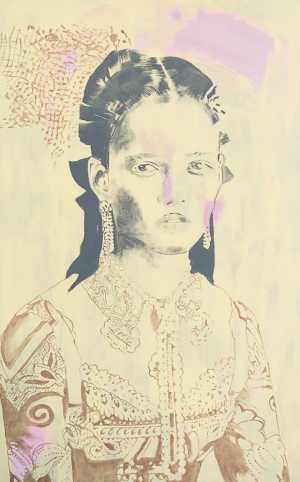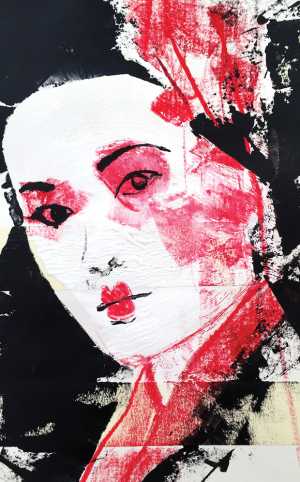If there is one thing we can be certain of, it is that art is vastly important for people. The impact that a work of art, an artist, a color, a tendency, or even a song can have on someone is undeniable. Moreover, the art market in Germany reflects the deep historical, cultural, and social significance of art, shaping how it is created, collected, and appreciated today.
The art market in Germany did not appear out of the blue. As with all historical developments, it has a reasoned origin. From the beginning of artistic expression, society has often limited art, treating it as a luxury object accessible only to a few.
It is worth clarifying that artists have not always been able to sell their works, promote themselves, or demand the fair value of their creations. In addition, the early limitations placed on artistic careers highlight how much the modern art market has evolved, especially in Germany.
The art market through history
The Renaissance marked an important turning point. However, it was not until the 17th century that changes in art truly began to take root at the European level.
At that moment, rationalism fostered skepticism, and for the first time in centuries, people freed themselves from religious restrictions. The scientific revolution reached its peak, allowing discoveries to be accepted without hesitation.

Until then, exhibitions of collections—usually owned by wealthy bourgeois families—took the form of wunderkammern (cabinets of curiosities).
During the seventeenth century, Central Europe experienced extraordinary growth in collecting art.
This boom was driven by rising wealth, secularization, intellectual curiosity, and a desire to display social status—turning art from a religious commodity into a marker of personal and cultural identity.

Consequently, the bourgeoisie gains power and influence. To manifest their new status, they found the perfect language: art.
Fast-forwarding to today, the art market in Germany reached a turnover of almost 675 million dollars in 2018.
Surprisingly, this represented only about one percent of the global art market. According to the Art Basel and UBS Global Art Market Report, the worldwide art market grew by 6% that year, reaching an estimated 67.4 billion dollars—the second-highest level in a decade.
For young artists, joining the market remains a dream. They want to live from their work, yet the first steps are often filled with obstacles. While enthusiasm and idealism fuel their beginnings, reality soon reveals that the art market in Germany is highly competitive. Only a few manage to establish themselves and make a living from their craft.
In summary, the historical evolution of art collecting and the rise of the bourgeoisie set the stage for today’s complex and divided art landscape in Germany. Understanding this context is essential before exploring how the modern market operates.
How the Art Market in Germany Became Divided
The art market in Germany is not uniform; rather, it is distinctly divided between high-end collectors and accessible segments for emerging artists. This division reflects both economic realities and cultural preferences.
Solkes: How is the art market in Germany?
Raiko Schwalbe, ARTMUC press department: The art market in Germany is focused on two ends—the high-price segment (seen in new auction records every month) and the low-price segment, up to ten thousand euros. Wealthy investors often put money into high-priced art, just as they do with stocks or real estate. Interestingly, more people are now investing in living artists than before.

As Schwalbe explains, the market is geographically concentrated. Cologne, with its prestigious ART COLOGNE fair, is considered the country’s “art capital.” Other notable hubs include Karlsruhe, Hamburg, and Munich. In fact, Hamburg is particularly active, hosting only one major art fair each year, making it a highly anticipated event for collectors and artists alike.
Solkes: How has the art market in Germany changed in recent decades?
Raiko Schwalbe: People are more open now. Unlike at the end of the last century, when many avoided galleries out of insecurity, today art is viewed as part of life, a marker of quality, and a form of self-expression.
Overall, the art market in Germany reflects a dynamic tension between tradition and innovation. While high-end collectors continue to dominate certain segments, opportunities for emerging artists are expanding through fairs, residencies, and increased public interest.

However, success requires more than talent—it demands strategic self-promotion, networking, and adaptability. As a result, understanding the market’s divisions is crucial for anyone aiming to navigate its complexities and build a sustainable career in the contemporary art world.
Opportunities and Challenges in the German Art Market
Nowadays, artists are promoted like never before. They receive scholarships from art associations, cultural sponsorships, and awards from both corporations and foundations. The German government also supports the sector, funding non-profit artistic organizations, commissions, art academies, and colleges.
Solkes: Do artists receive support from public or private institutions?
Raiko Schwalbe: Yes. There are many scholarships, though competition is fierce. The ARTMUC AWARD, for instance, supports artist-in-residence programs, giving creators the chance to work, connect, and exhibit in different cities or countries.
Nevertheless, many young artists face challenges. Often, only those with the right networks gain visibility. In this sense, the art world sometimes feels like a “stage of relationships.” Without strong connections, even talent and quality may not be enough.

But, there is no way around it, the art market in Germany remains tough. Few artists can live solely from their art. Even talented newcomers must compete with renowned figures and other emerging creators for collectors’ attention.
According to Schwalbe, self-marketing is essential. Artists must build their own websites, use social media, and participate in art fairs and exhibitions worldwide. This shift highlights the changing nature of the market: success now requires both artistic skill and entrepreneurial drive.
Ultimately, the divided structure of the German art market demonstrates that while opportunities exist for both high-end and emerging artists, navigating this landscape successfully requires strategic promotion, networking, and adaptability—key topics explored in the next section about spaces and platforms for art.
Spaces for art
Another growing issue is the lack of galleries and exhibition spaces. High rental prices in cities, even in Berlin, prevent many from showcasing their work. Consequently, artists often form project-based initiatives, organize their own shows, or rely on niche fairs.
Events like ARTMUC play a vital role by providing affordable platforms for young artists to reach a wide audience. Here, the closeness between artists and potential buyers can lead to meaningful exchanges and economic success.

As Schwalbe emphasizes, art fairs have grown significantly in the last decade, becoming important platforms for marketing and personal connection. Within just a few days, artists and galleries can interact with thousands of visitors.
Money, culture, and sponsorship
Cultural sponsorship today is just as important as other forms of private participation, such as donations or foundations. Companies increasingly use it as part of their communication and marketing strategies.
Especially in times of economic uncertainty, cultural sponsorship has proven resilient. It combines promotion with the emotional power of art, making collecting and buying artworks particularly attractive.
Ultimately, the art market in Germany is not just about commerce; it is about cultural identity, self-expression, and the bridges built between artists and society.


